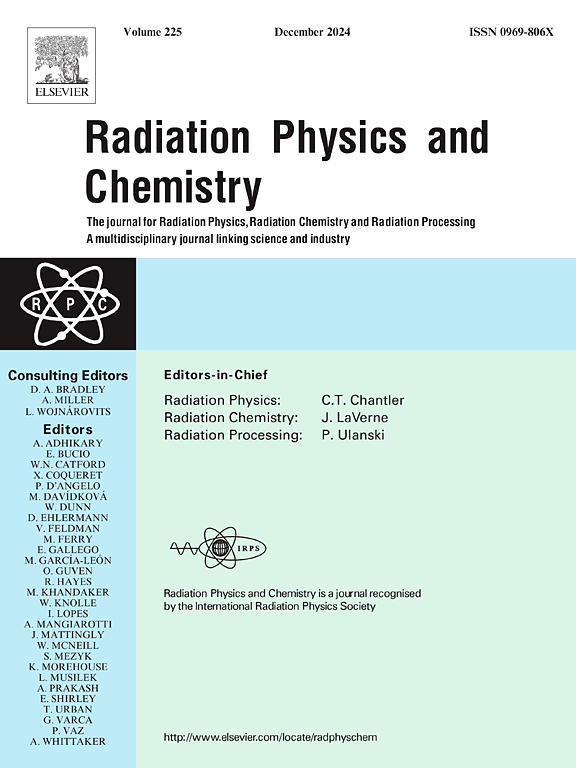Color-Tunable Luminescence in Eu3+/Tb3+ Co-Doped Tellurite Glass: Insights into Energy Transfer Mechanisms
IF 2.8
3区 物理与天体物理
Q3 CHEMISTRY, PHYSICAL
引用次数: 0
Abstract
This study investigates the luminescence and physical properties of tellurite-based glass co-doped with europium (EuEu3+/Tb3+共掺碲酸盐玻璃的可调色发光:对能量转移机制的见解
本文研究了铕(Eu3+)和铽(Tb3+)离子共掺杂碲基玻璃的发光和物理性能。通过1100℃熔融、500℃退火3小时,合成了30TeO2: 20B2O3: (20 - x)SiO2: 10Na2O: 15BaO: 5Tb2O3: xEu2O3的玻璃组合物。光学表征包括吸收光谱,在378 nm激发下的光致发光,其中5.0 mol% Eu2O3观察到淬灭效应,显著影响发射强度,并提出了提高性能的最佳掺杂浓度,以及国际委员会Éclairage (CIE) 1931比色分析。寿命测量用于探索衰变动力学,而能量传递效率模型强调了Tb3+和Eu3+离子之间的相互作用动力学。能量传递效率在光子学领域的应用前景广阔。这项工作提供了对稀土共掺杂对碲基玻璃发光行为的协同效应的见解。
本文章由计算机程序翻译,如有差异,请以英文原文为准。
求助全文
约1分钟内获得全文
求助全文
来源期刊

Radiation Physics and Chemistry
化学-核科学技术
CiteScore
5.60
自引率
17.20%
发文量
574
审稿时长
12 weeks
期刊介绍:
Radiation Physics and Chemistry is a multidisciplinary journal that provides a medium for publication of substantial and original papers, reviews, and short communications which focus on research and developments involving ionizing radiation in radiation physics, radiation chemistry and radiation processing.
The journal aims to publish papers with significance to an international audience, containing substantial novelty and scientific impact. The Editors reserve the rights to reject, with or without external review, papers that do not meet these criteria. This could include papers that are very similar to previous publications, only with changed target substrates, employed materials, analyzed sites and experimental methods, report results without presenting new insights and/or hypothesis testing, or do not focus on the radiation effects.
 求助内容:
求助内容: 应助结果提醒方式:
应助结果提醒方式:


